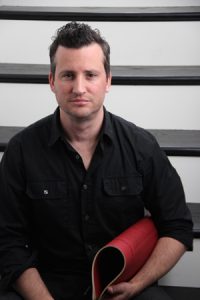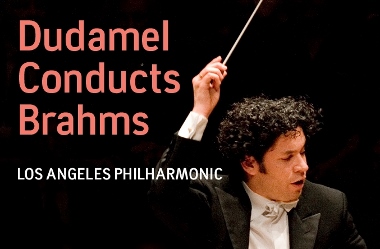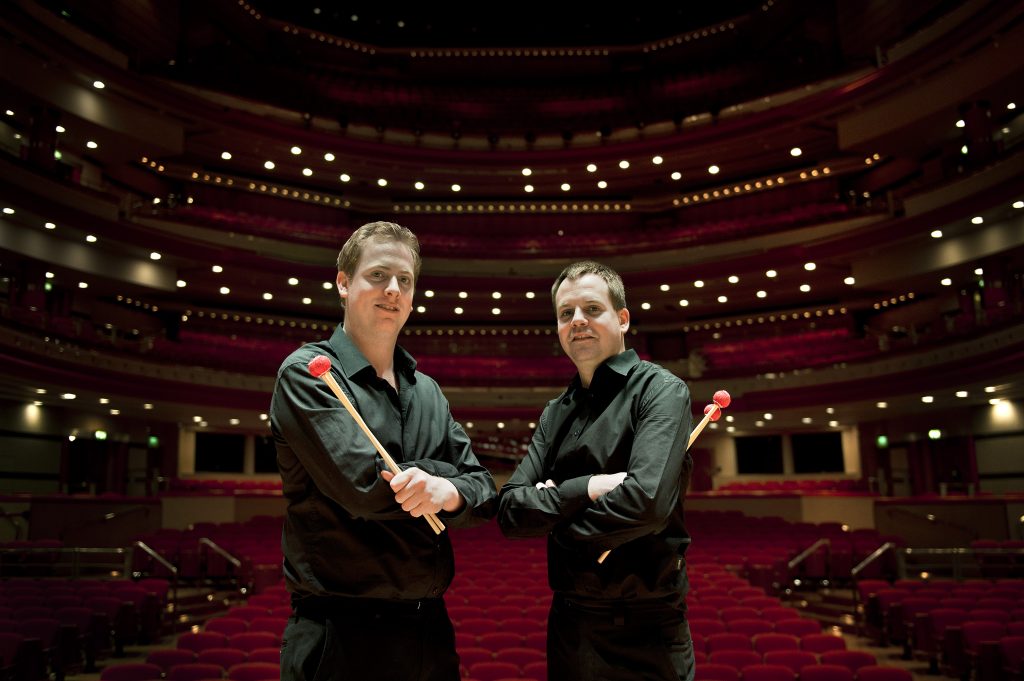A WEEKEND OF FIRSTS
Gustavo Dudamel returns to the podium this weekend — Thursday through Sunday, January 25-28, 2018 — to lead the LA Phil in a concert easily predicted to be a stunner. Brahms First Symphony, on which he labored for so long (over 14 years), is an openly passionate work, the last great essay in symphonic Sturm und Drang. This symphony truly represents an homage to Beethoven while Brahms was creating a language all his own. The magnificence and the mysteriousness of the final movement alone is a supreme work of mastery. The blackness, the complexity and the almost mystical beginning of the fourth movement flourishes with Brahms’s huge chorale-like major melody. When it appears, it’s like the sun shining suddenly after this dark introduction.
Equally as thrilling is LA Phil’s own Principal Timpani Joseph Pereira’s world premiere of his concerto, Threshold. Even though timpani concertos were introduced in as far back as the Baroque period (Johann Fischer’s Symphony for Eight Timpani and Georg Druschetzky’s Concerto for Six Timpani), they fell out of  favor until the 20th century. Even as the timpani concerto repertoire increased significantly, with works by Oliverio and Glass among them, there are still relatively few. Yes, this is a rare instrument to be featured as a concerto soloist, but Pereira’s work will highlight the timpani both as an expressive, melodic instrument as well as a tour de force of passion and rhythmic energy.
favor until the 20th century. Even as the timpani concerto repertoire increased significantly, with works by Oliverio and Glass among them, there are still relatively few. Yes, this is a rare instrument to be featured as a concerto soloist, but Pereira’s work will highlight the timpani both as an expressive, melodic instrument as well as a tour de force of passion and rhythmic energy.
LA Phil’s John Henken writes, “Sonic space is a formal element of Threshold, and timbre and texture are its thematic components. This is reflected physically, with the three soloists spread symmetrically across the front of the orchestra, with ceramic tiles – literal thresholds made musical – in center place. Indeed, with three percussionists of its own across the back, the orchestra is enveloped in percussion, and most instruments exploit and share percussive techniques and gestures, just as there are bowed and resonating wind elements in the percussion array.”
Pereira said, “Music, and art in general, is really about creating space, and the thresholds within that space are what really interest me. At the time of writing this piece, I could not help but think about the world we now live in, how the ‘threshold’ of our current human experience of each other and the world has changed drastically. There are so many issues we are now faced with, issues that get thrown at us every day from the news – and now you have to question if any of it is even true.
“Whether you agree with certain issues or not, we are living in a polarized climate. In a way, there’s a concentration of intensity which questions the thresholds we live in. Because of this, life has become saturated with tension and anxiety – much like the feeling of this piece.”
Written for the Maraca2 percussion duo of Tim Palmer and Jason Huxtable (at their suggestion), the 25-minute piece will feature Mr. Pereira as solo timpani, and Maraca2 as soloists playing timpani with medium gongs, 4 tom-toms, 8 roto-toms, congas, bongos, thunder sheets, spring coils, spiral cymbals, 8 ceramic tiles, 2 rocks, vibraphones, Chinese cymbals, bass drums, temple bowls with loose sleigh bells inside.
Thankfully, Pereira, who runs the percussion studio at the USC Thornton School of Music, is going to make sure that the timpani is just part of the show; along with reeds, brass, strings, harp, piano and celesta, the percussion section consists of bass drum, scrub brush, ceramic tile, bongos, congas, almglocken, thunder sheet, gong, temple bowl with loose sleigh bells inside, Chinese cymbal, suspended cymbals, metal wind chimes, glockenspiel, octobons, tom-toms, tam tam, Korean gong, ratchet, crotales, Thai gongs, vibraphone, & bell plates.
Bursting open the program, which plays three performances, is Stravinsky’s Fireworks which, despite its five-minute length, is a brilliant showpiece for orchestra. One of a handful of his early compositions with an opus number, Fireworks (1908) is perhaps most significant for its role in propelling the composer toward fame. Indeed, it was this work that caught the attention of the members of the Ballets Russes and led to the composition of the first of his epochal ballets, The Firebird (1910).
While nothing beats seeing this gigantic concert live, it will be broadcast live locally on the radio at KUSC 91.5 FM and as a live webstream at KUSC on Friday January 26 (the broadcast will be available online as an on-demand stream for 21 days following the live broadcast).
Dudamel Conducts Brahms
Los Angeles Philharmonic
Walt Disney Concert Hall
ends on January 28, 2018
for tickets, call 323.850.2000 or visit LA Phil



